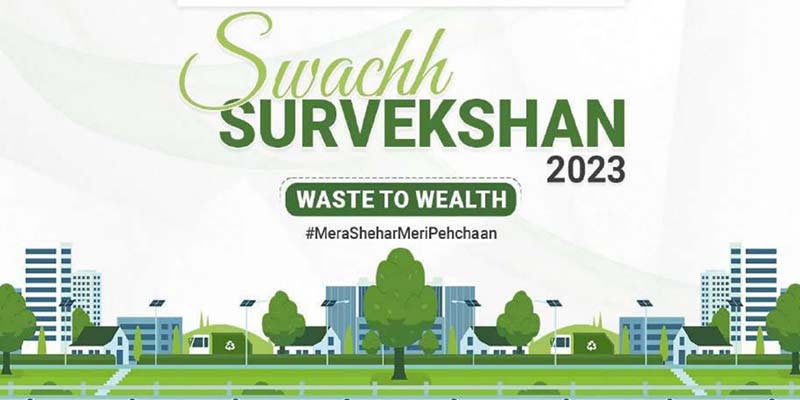- India
- Jun 28
Govt launches 8th edition of Swachh Survekshan
• The ministry of housing and urban affairs (MoHUA) launched the field assessment for Swachh Survekshan 2023.
• Around 3,000 assessors will take the field for assessment from July 1. The assessors will study performances of over 4,500 cities across 46 indicators and it is expected to be completed within a month.
• It is expected to engage with a whopping 10 crore citizens during this year’s assessment making it indisputably the world’s largest annual urban cleanliness survey.
• It was rolled out on May 24, 2022, with telephonic feedback from citizens on various parameters of city cleanliness.
• Conducted over four quarters, the first three quarters of assessment have already been completed successfully.
What is Swachh Survekshan?
• Swachh Survekshan is an annual survey of cleanliness, hygiene and sanitation in cities and towns across India. It was launched as part of the Swachh Bharat Abhiyan.
• The ministry of housing and urban affairs (MoHUA) first conducted the Swachh Survekshan survey in 2016 for the rating of 73 cities, followed by Swachh Survekshan-2017 conducted in January-February 2017 ranking 434 cities.
• The third round of Swachh Survekshan in 2018 was a quantum leap of scale. It was conducted across 4,203 cities in 66 days, and became the largest ever pan India sanitation survey in the world.
• Swachh Survekshan has been instrumental in fostering a spirit of healthy competition among towns and cities to improve their service delivery to citizens and towards creating cleaner cities.
• Swachh Survekshan 2022 survey covered 4,355 cities.
• Swachh Survekshan 2023 champions Waste to Wealth and is curated towards processing and scientific management of waste.
• Its objective is to help cities to achieve the goal of sustainable sanitation and waste management in a fast-track competitive manner.
Swachh Bharat Mission (Urban)
• The government launched Swachh Bharat Mission (Urban) on October 2, 2014.
The Swachh Bharat Mission (Urban) had two primary components of implementation:
1) Achieving 100 per cent open defecation-free (ODF) status.
2) 100 per cent scientific processing of solid waste.
• Since its launch in 2014, Swachh Bharat Mission-Urban (SBM-U) has made significant progress in the area of both sanitation and solid waste management.
Swachh Bharat Mission-Urban 2.0
• SBM-U 2.0 was launched by PM Narendra Modi on October 1, 2021.
• A financial outlay of Rs 1,41,600 crore has been finalised for SBM-U 2.0, including a central share of Rs 36,465 crore, which is over 2.5 times the financial outlay of Rs 62,009 crore in the last phase of the mission.
• Its key focus will be on sustaining the sanitation and solid waste management outcomes achieved and accelerating the momentum generated, thus achieving the Mission’s vision of a “Garbage-Free” Urban India.
• The implementation of the mission components will be done in a structured and time-bound manner, with thorough gap analysis of required infrastructure, detailed five-year action plans, and annual action plans with timelines.
• The mission will be completely paperless, digital, leveraging digital technology for complete transparency and accountability through GIS-mapped waste management infrastructure, robust user interface, online grievance redressal system, end-to-end online monitoring of projects starting from project creation to fund release, and project progress monitoring on integrated GIS-based platform.
Manorama Yearbook app is now available on Google Play Store and iOS App Store

